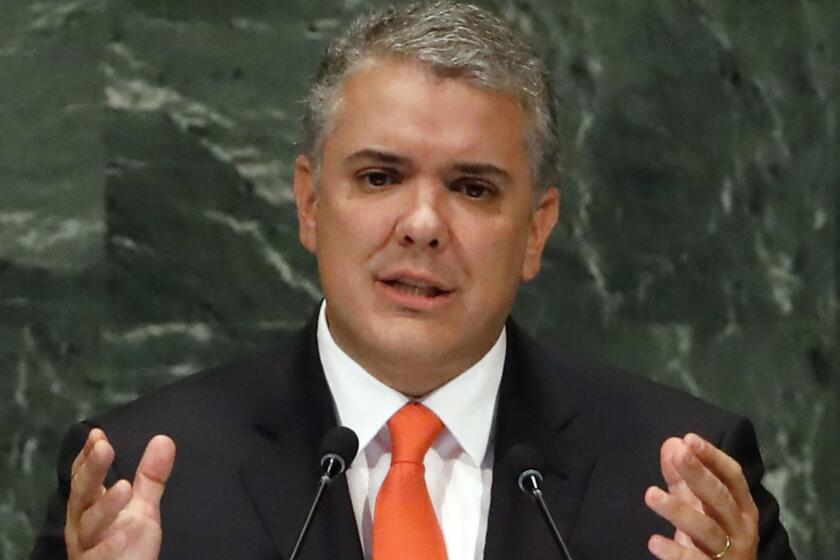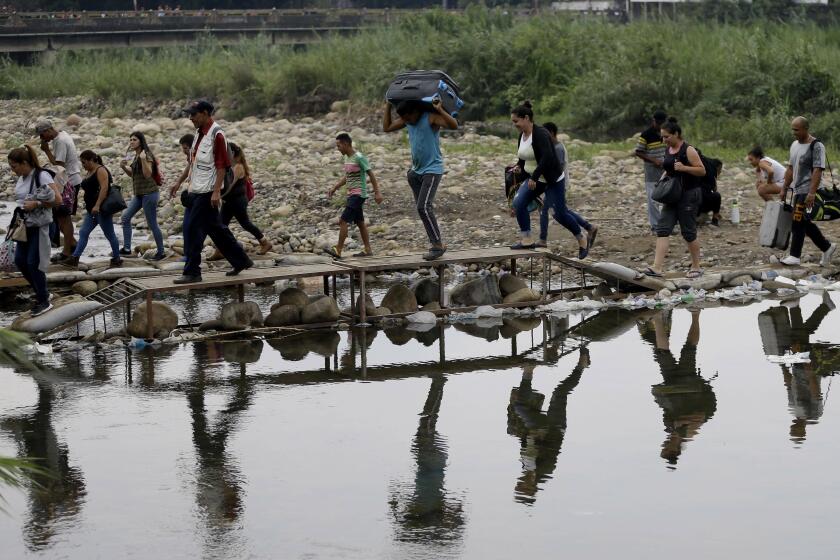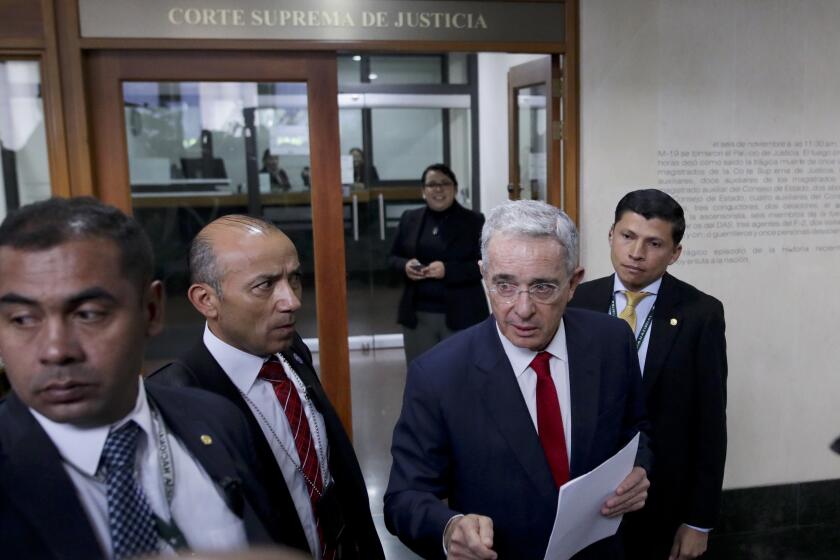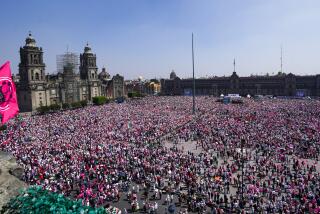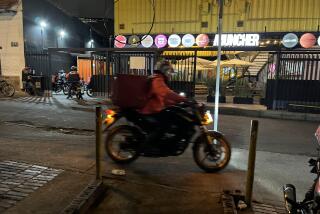Slain Colombian activist becomes icon of resistance as protests, deaths mount
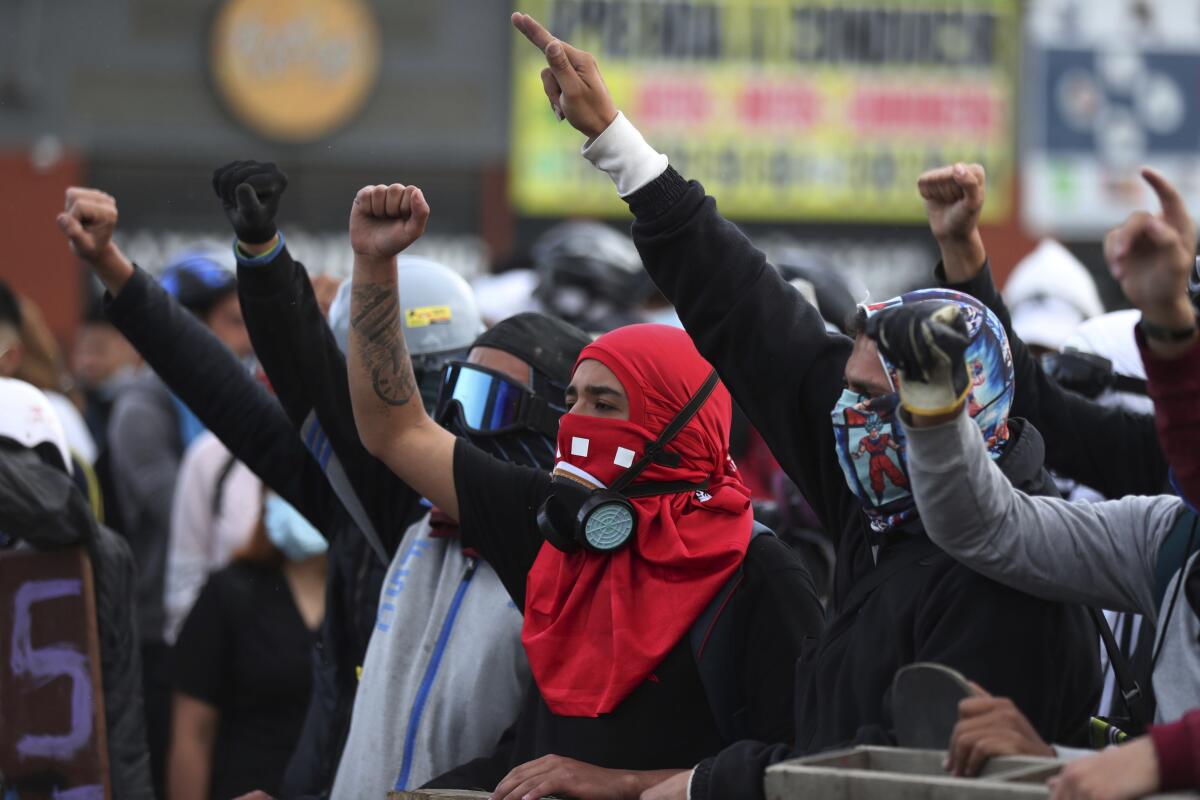
On the morning of May 5, Lucas Villa sent an audio message to a fellow student before heading off to another day of anti-government protests in Pereira, a coffee-growing hub in the Andean foothills of western Colombia.
“It is a difficult, ugly and tough moment, in which the worst can happen to anyone,” Villa told his friend, according to El Espectador newspaper. “Many of us may die, because in Colombia just to be young and be in the streets is to risk one’s life. We can all die.”
That evening, Villa, 37, was shot eight times as he and other demonstrators blocked a bridge. He was declared dead Tuesday after six days in a hospital. Authorities say they are looking for his killer, who apparently fired from a motorcycle.
Protests by hundreds of thousands of students, teachers, trade union members, farmers, Indigenous activists and others have convulsed Colombia for two weeks. The mass mobilizations across the country have largely shut down cities and left dozens dead — most killed by police, according to human rights groups.
“We have demanded an end to the massacre, a stop to the official violence,” Francisco Maltés, a protest leader, told reporters in Bogotá, the capital, after he and colleagues met Monday with President Iván Duque in a session that the opposition called futile. “No empathy was shown for the victims.”
Opposition leaders have called for new mass marches Wednesday in a possible escalation of the crisis.
Colombian lawmakers introduce a plan calling for the government to take control of the cocaine market, buying harvests and regulating sales.
The protests’ initial impetus was a government tax-increase plan that opponents said would disproportionately hurt low-income Colombians, already reeling in a pandemic-battered economy that has plunged multitudes into poverty. Duque, who had said the tax hike was needed to stabilize national finances, scrapped the proposal just a few days after the unrest on the streets began April 28 and accepted the resignation of his finance minister.
But the demonstrations quickly morphed into broader calls for improved healthcare, education, security and other demands. Colombia saw similar protests in 2019-20, but those lost momentum when the pandemic hit. This time, marches are pressing ahead despite a third coronavirus wave in a nation with one of the world’s highest per capita COVID-19 death rates.
The daily demonstrations in scores of towns and cities across Colombia have emerged as the most dramatic illustration to date of how the pandemic and its economic fallout have exacerbated long-standing inequities throughout Latin America, stoking profound discontent. The Colombian protests could augur additional social upheaval in a volatile region where poverty and income disparities are growing.

Villa’s slaying has become a rallying cry for many taking to Colombia’s streets.
Images of the charismatic activist, along with his cries for justice, have been circulating widely on social media and at marches. His death — which came amid reports of similar attacks elsewhere by armed thugs in plainclothes — has also sparked fears of a revival of the far-right paramilitary assassins who haunted the nation for decades during its darkest days of guerrilla conflict and drug cartel battles.
“Colombia was brewing for a disaster, and coronavirus just made everything absolutely worse,” said Gimena Sánchez, director of Andean issues for the Washington Office on Latin America, a nonprofit advocacy group. “Especially for the rural poor, people in urban working-class areas, for the Indigenous and other vulnerable groups.”
The rising tumult in the South American nation poses a diplomatic challenge for President Biden, whose administration has vowed to restore an emphasis on global human rights that was largely absent during the Trump years. Duque’s center-right government is a linchpin of Washington’s hemispheric anti-narcotics and security strategy — and a key player in U.S. efforts to oust leftist President Nicolás Maduro in neighboring Venezuela.
Colombia will register hundreds of thousands of Venezuelan migrants and refugees who are living in the country without papers in a bid to provide them with legal residence permits and facilitate their access to healthcare and legal employment opportunities.
As the death toll in Colombia mounts, the State Department has echoed Bogotá’s official line, denouncing “violence and vandalism” in Colombia while calling on police “to respect the rights of peaceful protesters.”
Colombian officials have defended their actions and — without offering any proof — blamed left-wing guerrillas, narcotics traffickers and Venezuela for fomenting violence. Authorities say protesters have vandalized or looted hundreds of banks, businesses, buses and police stations, among other targets.
Francisco “Pacho” Santos, Colombia’s ambassador to Washington, likened the protesters to the pro-Trump rioters who besieged the U.S. Capitol in January.
“Democracy is under attack in Colombia,” Santos tweeted.
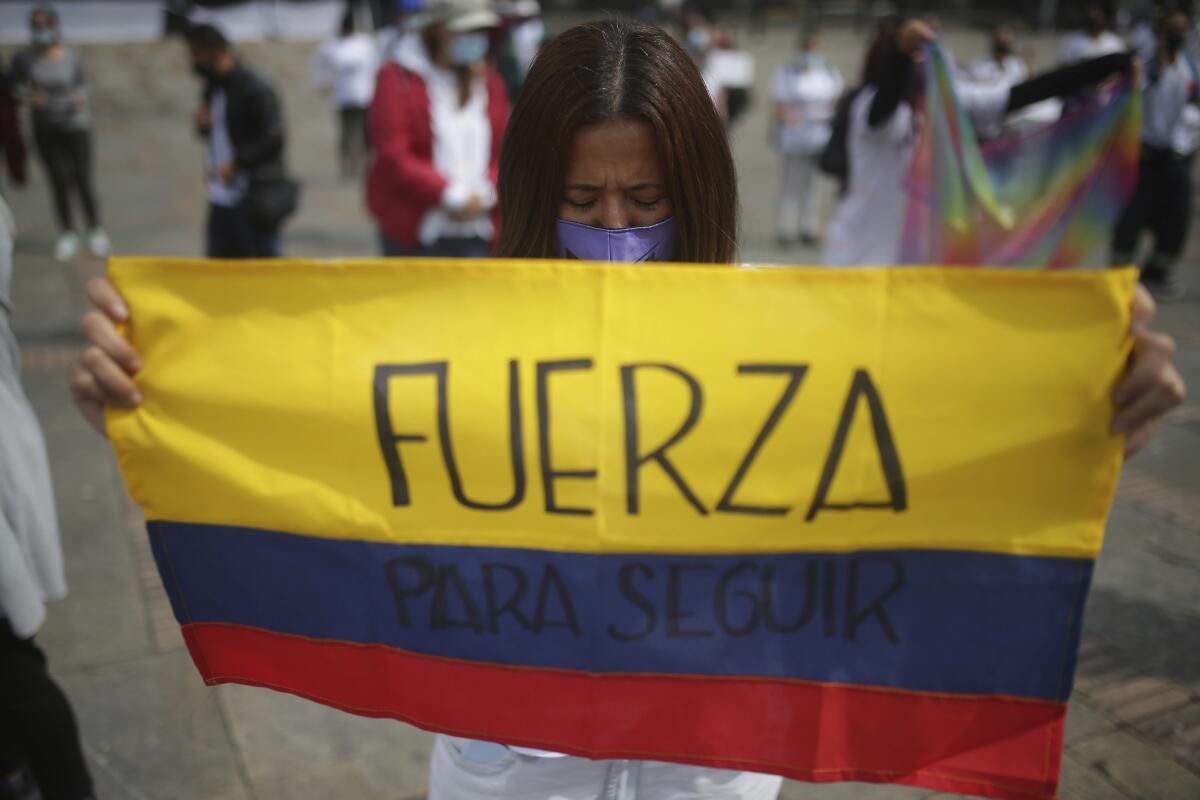
Opposition leaders deny any outside involvement and say the protesters have been overwhelmingly peaceful and seek to strengthen democracy. Participants say they have no intention of stopping.
“We have seen more than 30 killed, unjustly,” said Shirly Duarte, 28, who was among a group of students protesting recently in central Bogotá. “But we are going to keep on marching, because this country has to change.”
Human rights advocates accuse authorities of assaulting unarmed protesters with deadly force.
“In recent decades, we haven’t lived in a situation where the Colombian police acted in such a brutal manner in various points across the country,” José Miguel Vivanco, who heads the Americas division of Human Rights Watch, said on Twitter.
Former Colombian President Alvaro Uribe will be placed under house arrest as part of a witness-tampering investigation against him.
The group has received credible reports of 46 deaths since the protests began, Vivanco said. Human Rights Watch has confirmed that at least 13 of the 46 cases were protest-related — 12 protesters and one police officer — with the remaining cases still being verified.
In recent days, Pereira and the southern city of Cali, the country’s third-most populous, have become hot spots for violence.
As protests shut down roads and commerce, Carlos Maya, the mayor of Pereira, asked in a May 2 news conference that business leaders and the “private security” sector make a “common front” with authorities to restore order. A video of his comments went viral on social media. The mayor later denied that he was inciting vigilantism and called Villa’s killing “lamentable.”
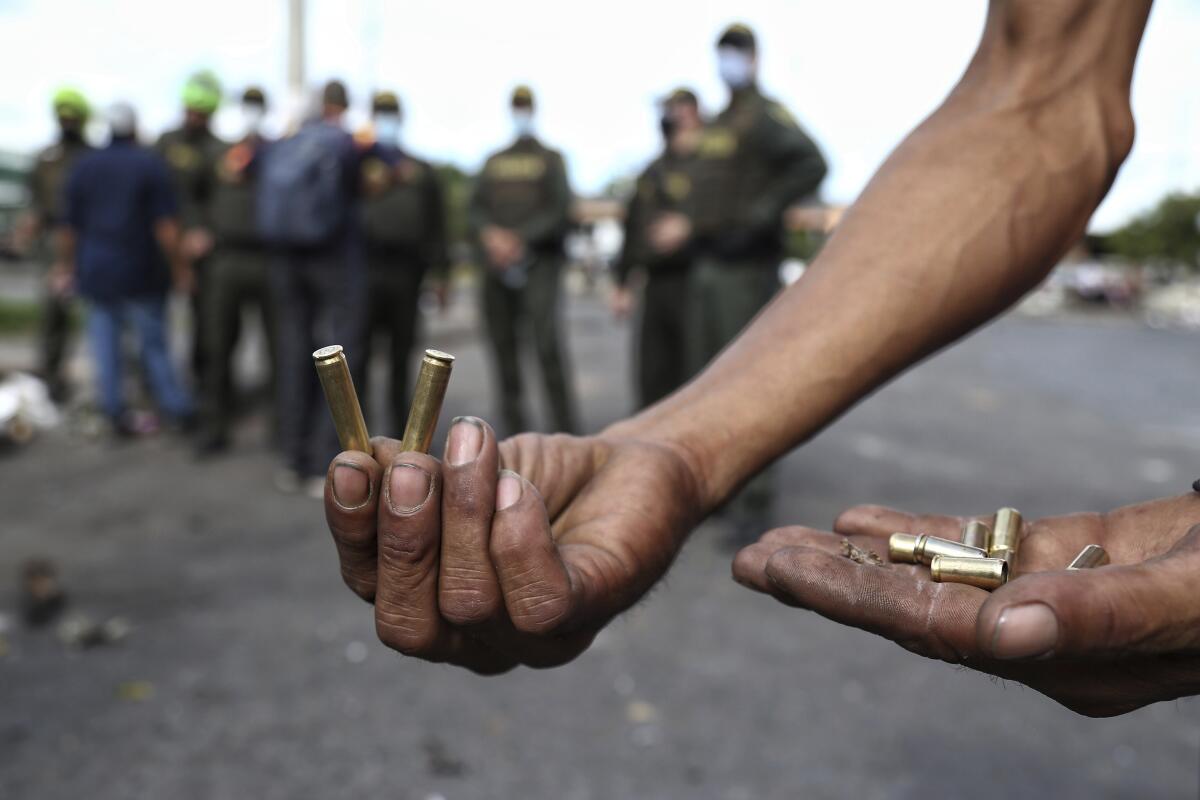
Villa, a student of sports science at the Technological Institute of Pereira, was a familiar figure at marches in his hometown.
Bald and bearded, he sang and danced with fellow demonstrators, gave pep talks about social justice and shook hands with anti-riot police in scenes posted on social media. Before the protests, the avid cyclist, jogger and vegetarian offered yoga classes to students and hawked handmade sandwiches on campus, according to friends and relatives.
“He’s a person who will never go unnoticed, he’s someone very cheerful, very spontaneous, and he makes people laugh,” his sister, Sol Uribe, 30, said in an interview posted on Instagram while Villa was still hospitalized. “We always find that people embrace his way of being, and he is surrounded by love.”
On the morning of May 5, local media reported, Villa was seen on a video at a demonstration declaring: “They are killing us in Colombia.”
News Alerts
Get breaking news, investigations, analysis and more signature journalism from the Los Angeles Times in your inbox.
You may occasionally receive promotional content from the Los Angeles Times.
That evening, according to news accounts, he and a few other protesters were blocking traffic on a city bridge. Shots rang out about 7:30 p.m., hitting Villa and wounding two nearby protesters. Doctors could not save Villa, whose body was riddled with bullet wounds.
Among those sending condolences was Duque, who vowed that Villa’s killers would face “the entire force of the law.”
On Sunday, hundreds gathered on the bridge where Villa last manned the protest ramparts. They conducted a group yoga session in his honor.
Times staff writer McDonnell reported from Mexico City and special correspondent Rojas from Bogotá, Colombia. Staff writer Tracy Wilkinson in Washington and special correspondents Chris Kraul in Bogotá and Cecilia Sánchez in Mexico City contributed to this report.
More to Read
Start your day right
Sign up for Essential California for news, features and recommendations from the L.A. Times and beyond in your inbox six days a week.
You may occasionally receive promotional content from the Los Angeles Times.
